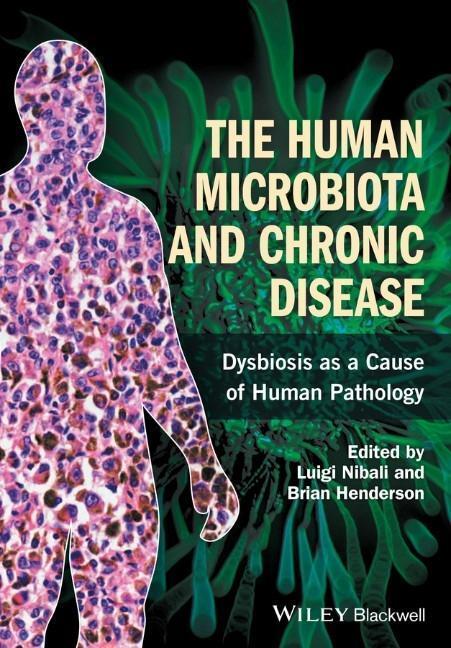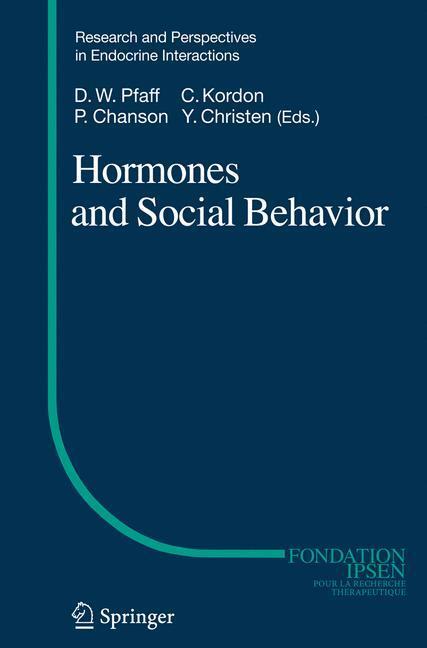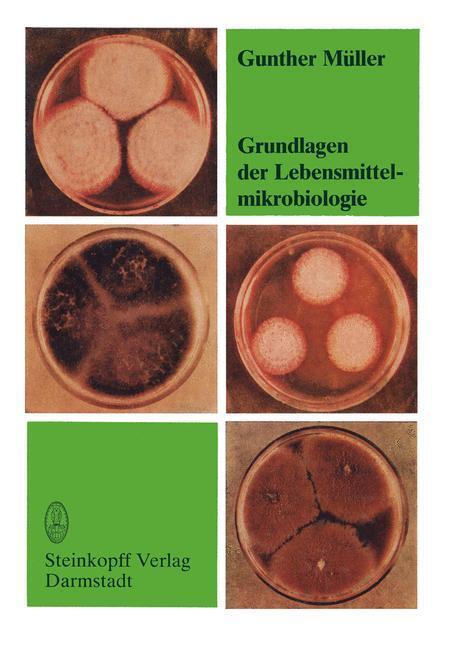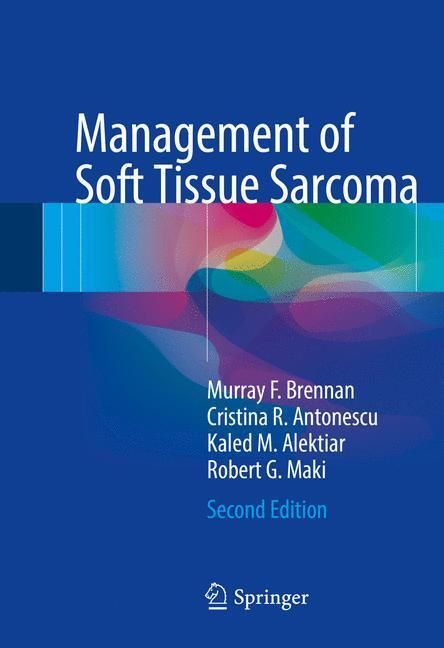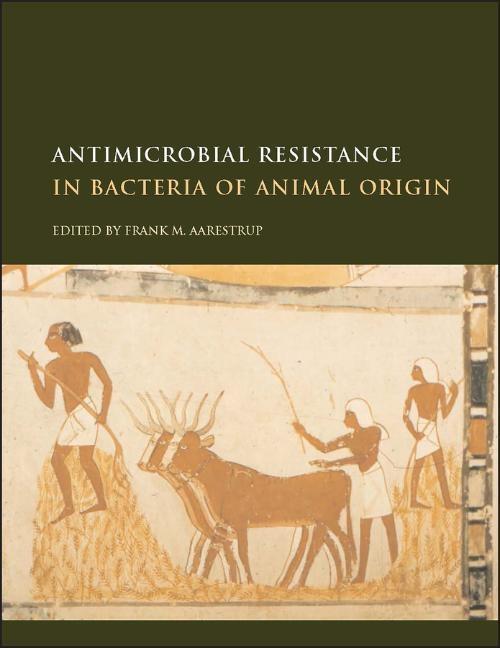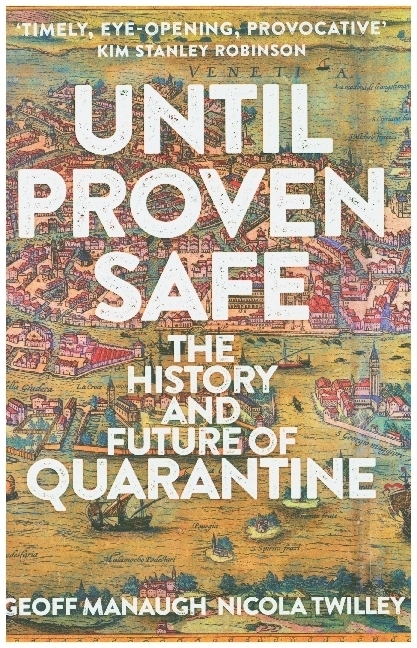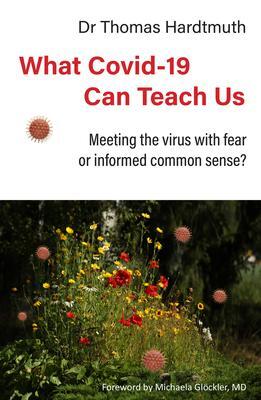Dekorationsartikel gehören nicht zum Leistungsumfang.
Sprache:
Englisch
168,50 €*
Versandkostenfrei per Post / DHL
Aktuell nicht verfügbar
Kategorien:
Beschreibung
Microbiota-associated pathology can be a direct result of changes in general bacterial composition, such as might be found in periodontitis and bacterial vaginosis, and/or as the result of colonization and/or overgrowth of so called keystone species. The disruption in the composition of the normal human microbiota, or dysbiosis, plays an integral role in human health and human disease.
The Human Microbiota and Human Chronic Disease: Dysbioses as a Cause of Human Pathology discusses the role of the microbiota in maintaining human health. The text introduces the reader to the biology of microbial dysbiosis and its potential role in both bacterial disease and in idiopathic chronic disease states.
Divided into five sections, the text delineates the concept of the human bacterial microbiota with particular attention being paid to the microbiotae of the gut, oral cavity and skin. A key methodology for exploring the microbiota, metagenomics, is also described. The book then shows the reader the cellular, molecular and genetic complexities of the bacterial microbiota, its myriad connections with the host and how these can maintain tissue homeostasis. Chapters then consider the role of dysbioses in human disease states, dealing with two of the commonest bacterial diseases of humanity - periodontitis and bacterial vaginosis. The composition of some, if not all microbiotas can be controlled by the diet and this is also dealt with in this section. The discussion moves on to the major 'idiopathic' diseases afflicting humans, and the potential role that dysbiosis could play in their induction and chronicity. The book then concludes with the therapeutic potential of manipulating the microbiota, introducing the concepts of probiotics, prebiotics and the administration of healthy human faeces (faecal microbiota transplantation), and then hypothesizes as to the future of medical treatment viewed from a microbiota-centric position.
* Provides an introduction to dysbiosis, or a disruption in the composition of the normal human microbiota
* Explains how microbiota-associated pathology and other chronic diseases can result from changes in general bacterial composition
* Explores the relationship humans have with their microbiota, and its significance in human health and disease
* Covers host genetic variants and their role in the composition of human microbial biofilms, integral to the relationship between human health and human disease
Authored and edited by leaders in the field, The Human Microbiota and Human Chronic Disease will be an invaluable resource for clinicians, pathologists, immunologists, cell and molecular biologists, biochemists, and system biologists studying cellular and molecular bases of human diseases.
The Human Microbiota and Human Chronic Disease: Dysbioses as a Cause of Human Pathology discusses the role of the microbiota in maintaining human health. The text introduces the reader to the biology of microbial dysbiosis and its potential role in both bacterial disease and in idiopathic chronic disease states.
Divided into five sections, the text delineates the concept of the human bacterial microbiota with particular attention being paid to the microbiotae of the gut, oral cavity and skin. A key methodology for exploring the microbiota, metagenomics, is also described. The book then shows the reader the cellular, molecular and genetic complexities of the bacterial microbiota, its myriad connections with the host and how these can maintain tissue homeostasis. Chapters then consider the role of dysbioses in human disease states, dealing with two of the commonest bacterial diseases of humanity - periodontitis and bacterial vaginosis. The composition of some, if not all microbiotas can be controlled by the diet and this is also dealt with in this section. The discussion moves on to the major 'idiopathic' diseases afflicting humans, and the potential role that dysbiosis could play in their induction and chronicity. The book then concludes with the therapeutic potential of manipulating the microbiota, introducing the concepts of probiotics, prebiotics and the administration of healthy human faeces (faecal microbiota transplantation), and then hypothesizes as to the future of medical treatment viewed from a microbiota-centric position.
* Provides an introduction to dysbiosis, or a disruption in the composition of the normal human microbiota
* Explains how microbiota-associated pathology and other chronic diseases can result from changes in general bacterial composition
* Explores the relationship humans have with their microbiota, and its significance in human health and disease
* Covers host genetic variants and their role in the composition of human microbial biofilms, integral to the relationship between human health and human disease
Authored and edited by leaders in the field, The Human Microbiota and Human Chronic Disease will be an invaluable resource for clinicians, pathologists, immunologists, cell and molecular biologists, biochemists, and system biologists studying cellular and molecular bases of human diseases.
Microbiota-associated pathology can be a direct result of changes in general bacterial composition, such as might be found in periodontitis and bacterial vaginosis, and/or as the result of colonization and/or overgrowth of so called keystone species. The disruption in the composition of the normal human microbiota, or dysbiosis, plays an integral role in human health and human disease.
The Human Microbiota and Human Chronic Disease: Dysbioses as a Cause of Human Pathology discusses the role of the microbiota in maintaining human health. The text introduces the reader to the biology of microbial dysbiosis and its potential role in both bacterial disease and in idiopathic chronic disease states.
Divided into five sections, the text delineates the concept of the human bacterial microbiota with particular attention being paid to the microbiotae of the gut, oral cavity and skin. A key methodology for exploring the microbiota, metagenomics, is also described. The book then shows the reader the cellular, molecular and genetic complexities of the bacterial microbiota, its myriad connections with the host and how these can maintain tissue homeostasis. Chapters then consider the role of dysbioses in human disease states, dealing with two of the commonest bacterial diseases of humanity - periodontitis and bacterial vaginosis. The composition of some, if not all microbiotas can be controlled by the diet and this is also dealt with in this section. The discussion moves on to the major 'idiopathic' diseases afflicting humans, and the potential role that dysbiosis could play in their induction and chronicity. The book then concludes with the therapeutic potential of manipulating the microbiota, introducing the concepts of probiotics, prebiotics and the administration of healthy human faeces (faecal microbiota transplantation), and then hypothesizes as to the future of medical treatment viewed from a microbiota-centric position.
* Provides an introduction to dysbiosis, or a disruption in the composition of the normal human microbiota
* Explains how microbiota-associated pathology and other chronic diseases can result from changes in general bacterial composition
* Explores the relationship humans have with their microbiota, and its significance in human health and disease
* Covers host genetic variants and their role in the composition of human microbial biofilms, integral to the relationship between human health and human disease
Authored and edited by leaders in the field, The Human Microbiota and Human Chronic Disease will be an invaluable resource for clinicians, pathologists, immunologists, cell and molecular biologists, biochemists, and system biologists studying cellular and molecular bases of human diseases.
The Human Microbiota and Human Chronic Disease: Dysbioses as a Cause of Human Pathology discusses the role of the microbiota in maintaining human health. The text introduces the reader to the biology of microbial dysbiosis and its potential role in both bacterial disease and in idiopathic chronic disease states.
Divided into five sections, the text delineates the concept of the human bacterial microbiota with particular attention being paid to the microbiotae of the gut, oral cavity and skin. A key methodology for exploring the microbiota, metagenomics, is also described. The book then shows the reader the cellular, molecular and genetic complexities of the bacterial microbiota, its myriad connections with the host and how these can maintain tissue homeostasis. Chapters then consider the role of dysbioses in human disease states, dealing with two of the commonest bacterial diseases of humanity - periodontitis and bacterial vaginosis. The composition of some, if not all microbiotas can be controlled by the diet and this is also dealt with in this section. The discussion moves on to the major 'idiopathic' diseases afflicting humans, and the potential role that dysbiosis could play in their induction and chronicity. The book then concludes with the therapeutic potential of manipulating the microbiota, introducing the concepts of probiotics, prebiotics and the administration of healthy human faeces (faecal microbiota transplantation), and then hypothesizes as to the future of medical treatment viewed from a microbiota-centric position.
* Provides an introduction to dysbiosis, or a disruption in the composition of the normal human microbiota
* Explains how microbiota-associated pathology and other chronic diseases can result from changes in general bacterial composition
* Explores the relationship humans have with their microbiota, and its significance in human health and disease
* Covers host genetic variants and their role in the composition of human microbial biofilms, integral to the relationship between human health and human disease
Authored and edited by leaders in the field, The Human Microbiota and Human Chronic Disease will be an invaluable resource for clinicians, pathologists, immunologists, cell and molecular biologists, biochemists, and system biologists studying cellular and molecular bases of human diseases.
Über den Autor
Luigi Nibali is a Senior Clinical Lecturer in the Clinical Oral Research Centre, Institute of Dentistry, Queen Mary University London in London, UK.
Brian Henderson is a Professor of Microbial Diseases in the School of Life and Medical Sciences at University College London in London, UK.
Inhaltsverzeichnis
List of contributors, xvii
Preface, xxi
Section 1 An introduction to the human tissue microbiome, 1
1 The human microbiota: an historical perspective, 3
Mike Wilson
1.1 Introduction: the discovery of the human microbiota: why do we care?, 3
1.2 The importance of the indigenous microbiota in health and disease, 3
1.3 The development of technologies for characterising the indigenous microbiota, 8
1.4 Culture?]independent approaches to microbial community analysis, 29
1.5 Determination of microbial community functions, 31
1.6 Closing remarks, 32
Take?]home message, 32
References, 33
2 An introduction to microbial dysbiosis, 37
Mike Curtis
2.1 Definition of dysbiosis, 37
2.2 The 'normal' microbiota, 38
2.3 Main features of dysbiosis, 45
2.4 Conclusions, 49
Take?]home message, 53
Acknowledgment, 53
References, 53
3 The gut microbiota: an integrated interactive system, 55
Hervé M. Blottière and Joël Doré
3.1 Introduction, 55
3.2 Who is there, how is it composed?, 56
3.3 A system in interaction with food, 58
3.4 A system highly impacted by the host, 61
3.5 A system in interaction with human cells, 62
3.6 Conclusion: an intriguing integrated interactive system deserving further study, 63
Take?]home message, 63
References, 63
4 The oral microbiota, 67
W. G. Wade
4.1 Introduction, 67
4.2 Composition of the oral microbiome, 68
4.3 The oral microbiota in health, 71
4.4 Role of oral microbiome in disease, 73
4.5 Future outlook, 75
Take?]home message, 75
References, 76
5 The skin microbiota, 81
P.L.J.M. Zeeuwen and J. Schalkwijk
5.1 Normal skin, 81
5.2 Skin diseases, 83
5.3 Experimental studies, 87
5.4 Dynamics of the skin microbiome, 87
5.5 Axillary skin microbiome transplantation, 89
5.6 Mouse skin microbiome studies, 89
5.7 Concluding remarks, 90
Take?]home message, 90
References, 90
6 Metagenomic analysis of the human microbiome, 95
Luis G. Bermúdez?]Humarán
6.1 Introduction, 95
6.2 The human microbiome, 96
6.3 Changes in microbiota composition during host life cycles, 97
6.4 The human microbiome and the environment, 98
6.5 Disease and health implications of microbiome, 99
6.6 Conclusions, 105
Take?]home message, 105
References, 106
Section 2
Microbiota-microbiota and microbiota-host interactions in health and disease, 113
7 Systems biology of bacteria?]host interactions, 115
Almut Heinken, Dmitry A. Ravcheev and Ines Thiele
7.1 Introduction, 115
7.2 Computational analysis of host?]microbe interactions, 118
7.3 Network?]based modeling, 121
7.4 Other computational modeling approaches, 127
7.5 Conclusion, 129
Take?]home message, 130
Acknowledgments, 130
References, 131
8 Bacterial biofilm formation and immune evasion mechanisms, 139
Jessica Snowden
8.1 Introduction, 139
8.2 Biofilms in human disease, 139
8.3 Biofilm formation, 141
8.4 Immune responses to biofilms, 143
8.5 Biofilm immune evasion strategies, 147
8.6 Vaccines and biofilm therapeutics, 148
8.7 Conclusions, 149
Take?]home message, 149
References, 150
9 Co?]evolution of microbes and immunity and its consequences
for modern?]day life, 155
Markus B. Geuking
9.1 Introduction, 155
9.2 Symbiosis in eukaryotic evolution, 156
9.3 Evolution of the (innate and adaptive) immune system, 157
9.4 Hygiene hypothesis, 159
9.5 What drives the composition of the microbiota?, 160
9.6 The pace of evolution, 161
Take?]home message, 162
References, 162
10 How viruses and bacteria have shaped the human genome: the implications for disease, 165
Frank Ryan
10.1 Genetic symbiosis, 165
10.2 Mitochondria: symbiogenesis in the human, 167
10.3 Virus symbiogenesis, 169
10.4 HERV proteins, 172
Take?]home message, 174
References, 174
11 The microbiota as an epigenetic control mechanism, 179
Boris A. Shenderov
11.1 Introduction, 179
11.2 Background on epigenetics and epigenomic programming/reprograming, 180
11.3 Epigenomics and link with energy metabolism, 184
11.4 The microbiota as a potential epigenetic modifier, 185
11.5
Epigenetic control of the host genes by pathogenic and opportunistic microorganisms, 188
11.6 Epigenetic control of the host genes by indigenous (probiotic) microorganisms, 189
11.7 Concluding remarks and future directions, 191
Take? home message, 193
References, 193
12 The emerging role of propionibacteria in human health
and disease, 199
Holger Brüggemann
12.1 Introduction, 199
12.2 Microbiological features of propionibacteria, 199
12.3 Population structure of P. acnes, 201
12.4 Propionibacteria as indigenous probiotics of the skin, 202
12.5 Propionibacteria as opportunistic pathogens, 203
12.6 Host interacting traits and factors of propionibacteria, 205
12.7 Host responses to P. acnes, 206
12.8 Propionibacterium?]specific bacteriophages, 208
12.9 Concluding remarks, 209
Take? home message, 210
References, 210
Section 3 Dysbioses and bacterial diseases: metchnikoff's legacy, 215
13 The periodontal diseases: microbial diseases or diseases of the host response?, 217
Luigi Nibali
13.1 The tooth: a potential breach in the mucosal barrier, 217
13.2 The periodontium from health to disease, 217
13.3 Periodontitis: one of the most common human diseases, 219
13.4 Periodontal treatment: a non?]specific biofilm disruption, 220
13.5 Microbial etiology, 220
13.6 The host response in periodontitis, 221
13.7 Conclusions, 223
Take? home message, 223
References, 223
14 The polymicrobial synergy and dysbiosis model of periodontal disease
pathogenesis, 227
George Hajishengallis and Richard J. Lamont
14.1 Introduction, 227
14.2 A (very) polymicrobial etiology of periodontitis, 229
14.3 Synergism among periodontal bacteria, 230
14.4 Interactions between bacterial communities and epithelial cells, 232
14.5 Manipulation of host immunity, 233
14.6 Conclusions, 237
Take?]home message, 238
References, 239
15 New paradigm in the relationship between periodontal disease and systemic diseases: ef-fects of oral bacteria on the gut microbiota and metabolism, 243
Kazuhisa Yamazaki
15.1 Introduction, 243
15.2 Association between periodontal and systemic diseases, 244
15.3 Issues in causal mechanisms of periodontal disease for systemic disease, 249
15.4 New insights into the mechanisms linking periodontal disease and systemic disease, 252
15.5 Effect of oral administration of P. gingivalis on metabolic change
and gut microbiota, 252
15.6 Conclusions, 254
Take?]home message, 255
References, 255
16 The vaginal microbiota in health and disease, 263
S. Tariq Sadiq and Phillip Hay
16.1 What makes a healthy microbiota, 263
Impact of age, menstrual cycle and environmental factors on vaginal health, 265
16.2 The Vaginal Microbiota in Disease, 265
Clinical consequences of altered vaginal microbiota
(see Figure 1), 268
Vaginal microbiota and transmission and susceptibility to HIV infection, 269
16.3 Conclusions, 269
Take?]home message, 269
References, 270
Section 4
Dysbioses and chronic diseases: is there
a connection?, 273
17 Reactive arthritis: the hidden bacterial connection, 275
John D. Carter
17.1 Introduction, 275
17.2 Reactive arthritis, 276
17.3 Pathophysiology of ReA, 277
17.4 Questions remain, 279
17.5 Conclusion, 280
Take?]home message, 280
References, 280
18 Rheumatoid arthritis: the bacterial connection, 283
Jacqueline Detert
18.1 Preclinical rheumatoid arthritis, 283
18.2 Predisposition to RA, 284
18.3 MCH?]HLA and genetic predisposition to RA, 284
18.4 Molecular mimicry in RA, 285
18.5 Innate immune system and RA, 285
18.6 Bystander activation and pattern recognition receptors, 286
18.7 Antibodies and neoepitopes, 287
18.8 Superantigens, 287
18.9 LPS, 287
18.10 Bacterial DNA and peptidoglycans, 288
18.11 Heat?]shock proteins, 288
18.12 Toll?]like and bacterial infections, 288
18.13 Proteus mirabilis, 288
18.14 Porphyromonas gingivalis and RA, 289
18.15 Gastrointestinal flora and RA, 290
18.16 Smoking, lung infection and RA, 291
18.17 Where to go from here?, 291
Take?]home message, 291
References, 292
19 Inflammatory bowel disease and the gut microbiota, 301
Nik Ding and Ailsa Hart
19.1 The microbiota in inflammatory bowel disease, 301
19.2 Dysbiosis and IBD pathogenesis, 301
19.3 Environmental factors affecting microbiome composition, 302
19.4
Genetics and application to the immune system and dysbiosis in IBD, 303
19.5 An overview of gut microbiota studies in IBD, 305
19.6 Specific bacterial changes in IBD, 306
Anti?]inflammatory effects of microbiota (functional dysbiosis), 308
19.7 Functional composition of microbiota in IBD, 308
19.8 Challenges, 310
19.9 Conclusion, 310
Take?]home message, 310
References, 310
20 Ankylosing spondylitis, klebsiella and the low?]starch diet, 317
Alan Ebringer, Taha Rashid and Clyde Wilson
20.1 Introduction, 317
20.2 Clinical features of AS, 317
20.3 Gut bacteria and total serum IgA, 318
20.4 Molecular mimicry in AS, 319
20.5 Pullulanase system and collagens, 320
20.6 Specific antibodies to Klebsiella in AS patients, 321
20.7 The low?]starch diet in AS, 322
20.8 Conclusions, 324
Take?]home message, 325
References, 325
21 Microbiome of chronic plaque psoriasis, 327
Lionel Fry
21.1 Introduction, 327
21.2 Microbiota in psoriasis, 329
21.3 Variation of microbiota with site, 331
21.4 Swabs versus biopsies, 331
21.5 Psoriatic arthritis, 331
21.6 Microbiome and immunity, 332
21.7 Evidence that the skin microbiome may be involved in the pathogenesis of psoriasis, 332
21.8 New hypothesis on the pathogenesis of psoriasis, 334
Take?]home message, 334
References, 335
22 Liver disease: interactions with the intestinal microbiota, 339
Katharina Brandl and Bernd Schnabl
22.1 Introduction, 339
22.2 Non?]alcoholic fatty liver disease, 339
22.3 Qualitative and quantitative changes in the intestinal microbiota, 340
22.4 Endotoxin, 341
22.5 Ethanol, 342
22.6 Choline, 342
22.7 Alcoholic liver disease, 343
Take?]home message, 346
References, 346
23 The gut microbiota: a predisposing factor in obesity, diabetes
and atherosclerosis, 351
Frida Fåk
23.1 Introduction, 351
23.2 The "obesogenic" microbiota: evidence from animal models, 351
23.3 The "obesogenic" microbiota in humans,...
Preface, xxi
Section 1 An introduction to the human tissue microbiome, 1
1 The human microbiota: an historical perspective, 3
Mike Wilson
1.1 Introduction: the discovery of the human microbiota: why do we care?, 3
1.2 The importance of the indigenous microbiota in health and disease, 3
1.3 The development of technologies for characterising the indigenous microbiota, 8
1.4 Culture?]independent approaches to microbial community analysis, 29
1.5 Determination of microbial community functions, 31
1.6 Closing remarks, 32
Take?]home message, 32
References, 33
2 An introduction to microbial dysbiosis, 37
Mike Curtis
2.1 Definition of dysbiosis, 37
2.2 The 'normal' microbiota, 38
2.3 Main features of dysbiosis, 45
2.4 Conclusions, 49
Take?]home message, 53
Acknowledgment, 53
References, 53
3 The gut microbiota: an integrated interactive system, 55
Hervé M. Blottière and Joël Doré
3.1 Introduction, 55
3.2 Who is there, how is it composed?, 56
3.3 A system in interaction with food, 58
3.4 A system highly impacted by the host, 61
3.5 A system in interaction with human cells, 62
3.6 Conclusion: an intriguing integrated interactive system deserving further study, 63
Take?]home message, 63
References, 63
4 The oral microbiota, 67
W. G. Wade
4.1 Introduction, 67
4.2 Composition of the oral microbiome, 68
4.3 The oral microbiota in health, 71
4.4 Role of oral microbiome in disease, 73
4.5 Future outlook, 75
Take?]home message, 75
References, 76
5 The skin microbiota, 81
P.L.J.M. Zeeuwen and J. Schalkwijk
5.1 Normal skin, 81
5.2 Skin diseases, 83
5.3 Experimental studies, 87
5.4 Dynamics of the skin microbiome, 87
5.5 Axillary skin microbiome transplantation, 89
5.6 Mouse skin microbiome studies, 89
5.7 Concluding remarks, 90
Take?]home message, 90
References, 90
6 Metagenomic analysis of the human microbiome, 95
Luis G. Bermúdez?]Humarán
6.1 Introduction, 95
6.2 The human microbiome, 96
6.3 Changes in microbiota composition during host life cycles, 97
6.4 The human microbiome and the environment, 98
6.5 Disease and health implications of microbiome, 99
6.6 Conclusions, 105
Take?]home message, 105
References, 106
Section 2
Microbiota-microbiota and microbiota-host interactions in health and disease, 113
7 Systems biology of bacteria?]host interactions, 115
Almut Heinken, Dmitry A. Ravcheev and Ines Thiele
7.1 Introduction, 115
7.2 Computational analysis of host?]microbe interactions, 118
7.3 Network?]based modeling, 121
7.4 Other computational modeling approaches, 127
7.5 Conclusion, 129
Take?]home message, 130
Acknowledgments, 130
References, 131
8 Bacterial biofilm formation and immune evasion mechanisms, 139
Jessica Snowden
8.1 Introduction, 139
8.2 Biofilms in human disease, 139
8.3 Biofilm formation, 141
8.4 Immune responses to biofilms, 143
8.5 Biofilm immune evasion strategies, 147
8.6 Vaccines and biofilm therapeutics, 148
8.7 Conclusions, 149
Take?]home message, 149
References, 150
9 Co?]evolution of microbes and immunity and its consequences
for modern?]day life, 155
Markus B. Geuking
9.1 Introduction, 155
9.2 Symbiosis in eukaryotic evolution, 156
9.3 Evolution of the (innate and adaptive) immune system, 157
9.4 Hygiene hypothesis, 159
9.5 What drives the composition of the microbiota?, 160
9.6 The pace of evolution, 161
Take?]home message, 162
References, 162
10 How viruses and bacteria have shaped the human genome: the implications for disease, 165
Frank Ryan
10.1 Genetic symbiosis, 165
10.2 Mitochondria: symbiogenesis in the human, 167
10.3 Virus symbiogenesis, 169
10.4 HERV proteins, 172
Take?]home message, 174
References, 174
11 The microbiota as an epigenetic control mechanism, 179
Boris A. Shenderov
11.1 Introduction, 179
11.2 Background on epigenetics and epigenomic programming/reprograming, 180
11.3 Epigenomics and link with energy metabolism, 184
11.4 The microbiota as a potential epigenetic modifier, 185
11.5
Epigenetic control of the host genes by pathogenic and opportunistic microorganisms, 188
11.6 Epigenetic control of the host genes by indigenous (probiotic) microorganisms, 189
11.7 Concluding remarks and future directions, 191
Take? home message, 193
References, 193
12 The emerging role of propionibacteria in human health
and disease, 199
Holger Brüggemann
12.1 Introduction, 199
12.2 Microbiological features of propionibacteria, 199
12.3 Population structure of P. acnes, 201
12.4 Propionibacteria as indigenous probiotics of the skin, 202
12.5 Propionibacteria as opportunistic pathogens, 203
12.6 Host interacting traits and factors of propionibacteria, 205
12.7 Host responses to P. acnes, 206
12.8 Propionibacterium?]specific bacteriophages, 208
12.9 Concluding remarks, 209
Take? home message, 210
References, 210
Section 3 Dysbioses and bacterial diseases: metchnikoff's legacy, 215
13 The periodontal diseases: microbial diseases or diseases of the host response?, 217
Luigi Nibali
13.1 The tooth: a potential breach in the mucosal barrier, 217
13.2 The periodontium from health to disease, 217
13.3 Periodontitis: one of the most common human diseases, 219
13.4 Periodontal treatment: a non?]specific biofilm disruption, 220
13.5 Microbial etiology, 220
13.6 The host response in periodontitis, 221
13.7 Conclusions, 223
Take? home message, 223
References, 223
14 The polymicrobial synergy and dysbiosis model of periodontal disease
pathogenesis, 227
George Hajishengallis and Richard J. Lamont
14.1 Introduction, 227
14.2 A (very) polymicrobial etiology of periodontitis, 229
14.3 Synergism among periodontal bacteria, 230
14.4 Interactions between bacterial communities and epithelial cells, 232
14.5 Manipulation of host immunity, 233
14.6 Conclusions, 237
Take?]home message, 238
References, 239
15 New paradigm in the relationship between periodontal disease and systemic diseases: ef-fects of oral bacteria on the gut microbiota and metabolism, 243
Kazuhisa Yamazaki
15.1 Introduction, 243
15.2 Association between periodontal and systemic diseases, 244
15.3 Issues in causal mechanisms of periodontal disease for systemic disease, 249
15.4 New insights into the mechanisms linking periodontal disease and systemic disease, 252
15.5 Effect of oral administration of P. gingivalis on metabolic change
and gut microbiota, 252
15.6 Conclusions, 254
Take?]home message, 255
References, 255
16 The vaginal microbiota in health and disease, 263
S. Tariq Sadiq and Phillip Hay
16.1 What makes a healthy microbiota, 263
Impact of age, menstrual cycle and environmental factors on vaginal health, 265
16.2 The Vaginal Microbiota in Disease, 265
Clinical consequences of altered vaginal microbiota
(see Figure 1), 268
Vaginal microbiota and transmission and susceptibility to HIV infection, 269
16.3 Conclusions, 269
Take?]home message, 269
References, 270
Section 4
Dysbioses and chronic diseases: is there
a connection?, 273
17 Reactive arthritis: the hidden bacterial connection, 275
John D. Carter
17.1 Introduction, 275
17.2 Reactive arthritis, 276
17.3 Pathophysiology of ReA, 277
17.4 Questions remain, 279
17.5 Conclusion, 280
Take?]home message, 280
References, 280
18 Rheumatoid arthritis: the bacterial connection, 283
Jacqueline Detert
18.1 Preclinical rheumatoid arthritis, 283
18.2 Predisposition to RA, 284
18.3 MCH?]HLA and genetic predisposition to RA, 284
18.4 Molecular mimicry in RA, 285
18.5 Innate immune system and RA, 285
18.6 Bystander activation and pattern recognition receptors, 286
18.7 Antibodies and neoepitopes, 287
18.8 Superantigens, 287
18.9 LPS, 287
18.10 Bacterial DNA and peptidoglycans, 288
18.11 Heat?]shock proteins, 288
18.12 Toll?]like and bacterial infections, 288
18.13 Proteus mirabilis, 288
18.14 Porphyromonas gingivalis and RA, 289
18.15 Gastrointestinal flora and RA, 290
18.16 Smoking, lung infection and RA, 291
18.17 Where to go from here?, 291
Take?]home message, 291
References, 292
19 Inflammatory bowel disease and the gut microbiota, 301
Nik Ding and Ailsa Hart
19.1 The microbiota in inflammatory bowel disease, 301
19.2 Dysbiosis and IBD pathogenesis, 301
19.3 Environmental factors affecting microbiome composition, 302
19.4
Genetics and application to the immune system and dysbiosis in IBD, 303
19.5 An overview of gut microbiota studies in IBD, 305
19.6 Specific bacterial changes in IBD, 306
Anti?]inflammatory effects of microbiota (functional dysbiosis), 308
19.7 Functional composition of microbiota in IBD, 308
19.8 Challenges, 310
19.9 Conclusion, 310
Take?]home message, 310
References, 310
20 Ankylosing spondylitis, klebsiella and the low?]starch diet, 317
Alan Ebringer, Taha Rashid and Clyde Wilson
20.1 Introduction, 317
20.2 Clinical features of AS, 317
20.3 Gut bacteria and total serum IgA, 318
20.4 Molecular mimicry in AS, 319
20.5 Pullulanase system and collagens, 320
20.6 Specific antibodies to Klebsiella in AS patients, 321
20.7 The low?]starch diet in AS, 322
20.8 Conclusions, 324
Take?]home message, 325
References, 325
21 Microbiome of chronic plaque psoriasis, 327
Lionel Fry
21.1 Introduction, 327
21.2 Microbiota in psoriasis, 329
21.3 Variation of microbiota with site, 331
21.4 Swabs versus biopsies, 331
21.5 Psoriatic arthritis, 331
21.6 Microbiome and immunity, 332
21.7 Evidence that the skin microbiome may be involved in the pathogenesis of psoriasis, 332
21.8 New hypothesis on the pathogenesis of psoriasis, 334
Take?]home message, 334
References, 335
22 Liver disease: interactions with the intestinal microbiota, 339
Katharina Brandl and Bernd Schnabl
22.1 Introduction, 339
22.2 Non?]alcoholic fatty liver disease, 339
22.3 Qualitative and quantitative changes in the intestinal microbiota, 340
22.4 Endotoxin, 341
22.5 Ethanol, 342
22.6 Choline, 342
22.7 Alcoholic liver disease, 343
Take?]home message, 346
References, 346
23 The gut microbiota: a predisposing factor in obesity, diabetes
and atherosclerosis, 351
Frida Fåk
23.1 Introduction, 351
23.2 The "obesogenic" microbiota: evidence from animal models, 351
23.3 The "obesogenic" microbiota in humans,...
Details
| Erscheinungsjahr: | 2016 |
|---|---|
| Fachbereich: | Grundlagen |
| Genre: | Biologie |
| Rubrik: | Naturwissenschaften & Technik |
| Medium: | Buch |
| Seiten: | 544 |
| Inhalt: | 544 S. |
| ISBN-13: | 9781118982877 |
| ISBN-10: | 1118982878 |
| Sprache: | Englisch |
| Einband: | Gebunden |
| Autor: |
Henderson, Brian
Nibali, Luigi |
| Redaktion: |
Nibali, Luigi
Henderson, Brian |
| Herausgeber: | Luigi Nibali/Brian Henderson |
| Hersteller: | John Wiley & Sons |
| Maße: | 251 x 176 x 30 mm |
| Von/Mit: | Luigi Nibali (u. a.) |
| Erscheinungsdatum: | 03.10.2016 |
| Gewicht: | 1,086 kg |
Über den Autor
Luigi Nibali is a Senior Clinical Lecturer in the Clinical Oral Research Centre, Institute of Dentistry, Queen Mary University London in London, UK.
Brian Henderson is a Professor of Microbial Diseases in the School of Life and Medical Sciences at University College London in London, UK.
Inhaltsverzeichnis
List of contributors, xvii
Preface, xxi
Section 1 An introduction to the human tissue microbiome, 1
1 The human microbiota: an historical perspective, 3
Mike Wilson
1.1 Introduction: the discovery of the human microbiota: why do we care?, 3
1.2 The importance of the indigenous microbiota in health and disease, 3
1.3 The development of technologies for characterising the indigenous microbiota, 8
1.4 Culture?]independent approaches to microbial community analysis, 29
1.5 Determination of microbial community functions, 31
1.6 Closing remarks, 32
Take?]home message, 32
References, 33
2 An introduction to microbial dysbiosis, 37
Mike Curtis
2.1 Definition of dysbiosis, 37
2.2 The 'normal' microbiota, 38
2.3 Main features of dysbiosis, 45
2.4 Conclusions, 49
Take?]home message, 53
Acknowledgment, 53
References, 53
3 The gut microbiota: an integrated interactive system, 55
Hervé M. Blottière and Joël Doré
3.1 Introduction, 55
3.2 Who is there, how is it composed?, 56
3.3 A system in interaction with food, 58
3.4 A system highly impacted by the host, 61
3.5 A system in interaction with human cells, 62
3.6 Conclusion: an intriguing integrated interactive system deserving further study, 63
Take?]home message, 63
References, 63
4 The oral microbiota, 67
W. G. Wade
4.1 Introduction, 67
4.2 Composition of the oral microbiome, 68
4.3 The oral microbiota in health, 71
4.4 Role of oral microbiome in disease, 73
4.5 Future outlook, 75
Take?]home message, 75
References, 76
5 The skin microbiota, 81
P.L.J.M. Zeeuwen and J. Schalkwijk
5.1 Normal skin, 81
5.2 Skin diseases, 83
5.3 Experimental studies, 87
5.4 Dynamics of the skin microbiome, 87
5.5 Axillary skin microbiome transplantation, 89
5.6 Mouse skin microbiome studies, 89
5.7 Concluding remarks, 90
Take?]home message, 90
References, 90
6 Metagenomic analysis of the human microbiome, 95
Luis G. Bermúdez?]Humarán
6.1 Introduction, 95
6.2 The human microbiome, 96
6.3 Changes in microbiota composition during host life cycles, 97
6.4 The human microbiome and the environment, 98
6.5 Disease and health implications of microbiome, 99
6.6 Conclusions, 105
Take?]home message, 105
References, 106
Section 2
Microbiota-microbiota and microbiota-host interactions in health and disease, 113
7 Systems biology of bacteria?]host interactions, 115
Almut Heinken, Dmitry A. Ravcheev and Ines Thiele
7.1 Introduction, 115
7.2 Computational analysis of host?]microbe interactions, 118
7.3 Network?]based modeling, 121
7.4 Other computational modeling approaches, 127
7.5 Conclusion, 129
Take?]home message, 130
Acknowledgments, 130
References, 131
8 Bacterial biofilm formation and immune evasion mechanisms, 139
Jessica Snowden
8.1 Introduction, 139
8.2 Biofilms in human disease, 139
8.3 Biofilm formation, 141
8.4 Immune responses to biofilms, 143
8.5 Biofilm immune evasion strategies, 147
8.6 Vaccines and biofilm therapeutics, 148
8.7 Conclusions, 149
Take?]home message, 149
References, 150
9 Co?]evolution of microbes and immunity and its consequences
for modern?]day life, 155
Markus B. Geuking
9.1 Introduction, 155
9.2 Symbiosis in eukaryotic evolution, 156
9.3 Evolution of the (innate and adaptive) immune system, 157
9.4 Hygiene hypothesis, 159
9.5 What drives the composition of the microbiota?, 160
9.6 The pace of evolution, 161
Take?]home message, 162
References, 162
10 How viruses and bacteria have shaped the human genome: the implications for disease, 165
Frank Ryan
10.1 Genetic symbiosis, 165
10.2 Mitochondria: symbiogenesis in the human, 167
10.3 Virus symbiogenesis, 169
10.4 HERV proteins, 172
Take?]home message, 174
References, 174
11 The microbiota as an epigenetic control mechanism, 179
Boris A. Shenderov
11.1 Introduction, 179
11.2 Background on epigenetics and epigenomic programming/reprograming, 180
11.3 Epigenomics and link with energy metabolism, 184
11.4 The microbiota as a potential epigenetic modifier, 185
11.5
Epigenetic control of the host genes by pathogenic and opportunistic microorganisms, 188
11.6 Epigenetic control of the host genes by indigenous (probiotic) microorganisms, 189
11.7 Concluding remarks and future directions, 191
Take? home message, 193
References, 193
12 The emerging role of propionibacteria in human health
and disease, 199
Holger Brüggemann
12.1 Introduction, 199
12.2 Microbiological features of propionibacteria, 199
12.3 Population structure of P. acnes, 201
12.4 Propionibacteria as indigenous probiotics of the skin, 202
12.5 Propionibacteria as opportunistic pathogens, 203
12.6 Host interacting traits and factors of propionibacteria, 205
12.7 Host responses to P. acnes, 206
12.8 Propionibacterium?]specific bacteriophages, 208
12.9 Concluding remarks, 209
Take? home message, 210
References, 210
Section 3 Dysbioses and bacterial diseases: metchnikoff's legacy, 215
13 The periodontal diseases: microbial diseases or diseases of the host response?, 217
Luigi Nibali
13.1 The tooth: a potential breach in the mucosal barrier, 217
13.2 The periodontium from health to disease, 217
13.3 Periodontitis: one of the most common human diseases, 219
13.4 Periodontal treatment: a non?]specific biofilm disruption, 220
13.5 Microbial etiology, 220
13.6 The host response in periodontitis, 221
13.7 Conclusions, 223
Take? home message, 223
References, 223
14 The polymicrobial synergy and dysbiosis model of periodontal disease
pathogenesis, 227
George Hajishengallis and Richard J. Lamont
14.1 Introduction, 227
14.2 A (very) polymicrobial etiology of periodontitis, 229
14.3 Synergism among periodontal bacteria, 230
14.4 Interactions between bacterial communities and epithelial cells, 232
14.5 Manipulation of host immunity, 233
14.6 Conclusions, 237
Take?]home message, 238
References, 239
15 New paradigm in the relationship between periodontal disease and systemic diseases: ef-fects of oral bacteria on the gut microbiota and metabolism, 243
Kazuhisa Yamazaki
15.1 Introduction, 243
15.2 Association between periodontal and systemic diseases, 244
15.3 Issues in causal mechanisms of periodontal disease for systemic disease, 249
15.4 New insights into the mechanisms linking periodontal disease and systemic disease, 252
15.5 Effect of oral administration of P. gingivalis on metabolic change
and gut microbiota, 252
15.6 Conclusions, 254
Take?]home message, 255
References, 255
16 The vaginal microbiota in health and disease, 263
S. Tariq Sadiq and Phillip Hay
16.1 What makes a healthy microbiota, 263
Impact of age, menstrual cycle and environmental factors on vaginal health, 265
16.2 The Vaginal Microbiota in Disease, 265
Clinical consequences of altered vaginal microbiota
(see Figure 1), 268
Vaginal microbiota and transmission and susceptibility to HIV infection, 269
16.3 Conclusions, 269
Take?]home message, 269
References, 270
Section 4
Dysbioses and chronic diseases: is there
a connection?, 273
17 Reactive arthritis: the hidden bacterial connection, 275
John D. Carter
17.1 Introduction, 275
17.2 Reactive arthritis, 276
17.3 Pathophysiology of ReA, 277
17.4 Questions remain, 279
17.5 Conclusion, 280
Take?]home message, 280
References, 280
18 Rheumatoid arthritis: the bacterial connection, 283
Jacqueline Detert
18.1 Preclinical rheumatoid arthritis, 283
18.2 Predisposition to RA, 284
18.3 MCH?]HLA and genetic predisposition to RA, 284
18.4 Molecular mimicry in RA, 285
18.5 Innate immune system and RA, 285
18.6 Bystander activation and pattern recognition receptors, 286
18.7 Antibodies and neoepitopes, 287
18.8 Superantigens, 287
18.9 LPS, 287
18.10 Bacterial DNA and peptidoglycans, 288
18.11 Heat?]shock proteins, 288
18.12 Toll?]like and bacterial infections, 288
18.13 Proteus mirabilis, 288
18.14 Porphyromonas gingivalis and RA, 289
18.15 Gastrointestinal flora and RA, 290
18.16 Smoking, lung infection and RA, 291
18.17 Where to go from here?, 291
Take?]home message, 291
References, 292
19 Inflammatory bowel disease and the gut microbiota, 301
Nik Ding and Ailsa Hart
19.1 The microbiota in inflammatory bowel disease, 301
19.2 Dysbiosis and IBD pathogenesis, 301
19.3 Environmental factors affecting microbiome composition, 302
19.4
Genetics and application to the immune system and dysbiosis in IBD, 303
19.5 An overview of gut microbiota studies in IBD, 305
19.6 Specific bacterial changes in IBD, 306
Anti?]inflammatory effects of microbiota (functional dysbiosis), 308
19.7 Functional composition of microbiota in IBD, 308
19.8 Challenges, 310
19.9 Conclusion, 310
Take?]home message, 310
References, 310
20 Ankylosing spondylitis, klebsiella and the low?]starch diet, 317
Alan Ebringer, Taha Rashid and Clyde Wilson
20.1 Introduction, 317
20.2 Clinical features of AS, 317
20.3 Gut bacteria and total serum IgA, 318
20.4 Molecular mimicry in AS, 319
20.5 Pullulanase system and collagens, 320
20.6 Specific antibodies to Klebsiella in AS patients, 321
20.7 The low?]starch diet in AS, 322
20.8 Conclusions, 324
Take?]home message, 325
References, 325
21 Microbiome of chronic plaque psoriasis, 327
Lionel Fry
21.1 Introduction, 327
21.2 Microbiota in psoriasis, 329
21.3 Variation of microbiota with site, 331
21.4 Swabs versus biopsies, 331
21.5 Psoriatic arthritis, 331
21.6 Microbiome and immunity, 332
21.7 Evidence that the skin microbiome may be involved in the pathogenesis of psoriasis, 332
21.8 New hypothesis on the pathogenesis of psoriasis, 334
Take?]home message, 334
References, 335
22 Liver disease: interactions with the intestinal microbiota, 339
Katharina Brandl and Bernd Schnabl
22.1 Introduction, 339
22.2 Non?]alcoholic fatty liver disease, 339
22.3 Qualitative and quantitative changes in the intestinal microbiota, 340
22.4 Endotoxin, 341
22.5 Ethanol, 342
22.6 Choline, 342
22.7 Alcoholic liver disease, 343
Take?]home message, 346
References, 346
23 The gut microbiota: a predisposing factor in obesity, diabetes
and atherosclerosis, 351
Frida Fåk
23.1 Introduction, 351
23.2 The "obesogenic" microbiota: evidence from animal models, 351
23.3 The "obesogenic" microbiota in humans,...
Preface, xxi
Section 1 An introduction to the human tissue microbiome, 1
1 The human microbiota: an historical perspective, 3
Mike Wilson
1.1 Introduction: the discovery of the human microbiota: why do we care?, 3
1.2 The importance of the indigenous microbiota in health and disease, 3
1.3 The development of technologies for characterising the indigenous microbiota, 8
1.4 Culture?]independent approaches to microbial community analysis, 29
1.5 Determination of microbial community functions, 31
1.6 Closing remarks, 32
Take?]home message, 32
References, 33
2 An introduction to microbial dysbiosis, 37
Mike Curtis
2.1 Definition of dysbiosis, 37
2.2 The 'normal' microbiota, 38
2.3 Main features of dysbiosis, 45
2.4 Conclusions, 49
Take?]home message, 53
Acknowledgment, 53
References, 53
3 The gut microbiota: an integrated interactive system, 55
Hervé M. Blottière and Joël Doré
3.1 Introduction, 55
3.2 Who is there, how is it composed?, 56
3.3 A system in interaction with food, 58
3.4 A system highly impacted by the host, 61
3.5 A system in interaction with human cells, 62
3.6 Conclusion: an intriguing integrated interactive system deserving further study, 63
Take?]home message, 63
References, 63
4 The oral microbiota, 67
W. G. Wade
4.1 Introduction, 67
4.2 Composition of the oral microbiome, 68
4.3 The oral microbiota in health, 71
4.4 Role of oral microbiome in disease, 73
4.5 Future outlook, 75
Take?]home message, 75
References, 76
5 The skin microbiota, 81
P.L.J.M. Zeeuwen and J. Schalkwijk
5.1 Normal skin, 81
5.2 Skin diseases, 83
5.3 Experimental studies, 87
5.4 Dynamics of the skin microbiome, 87
5.5 Axillary skin microbiome transplantation, 89
5.6 Mouse skin microbiome studies, 89
5.7 Concluding remarks, 90
Take?]home message, 90
References, 90
6 Metagenomic analysis of the human microbiome, 95
Luis G. Bermúdez?]Humarán
6.1 Introduction, 95
6.2 The human microbiome, 96
6.3 Changes in microbiota composition during host life cycles, 97
6.4 The human microbiome and the environment, 98
6.5 Disease and health implications of microbiome, 99
6.6 Conclusions, 105
Take?]home message, 105
References, 106
Section 2
Microbiota-microbiota and microbiota-host interactions in health and disease, 113
7 Systems biology of bacteria?]host interactions, 115
Almut Heinken, Dmitry A. Ravcheev and Ines Thiele
7.1 Introduction, 115
7.2 Computational analysis of host?]microbe interactions, 118
7.3 Network?]based modeling, 121
7.4 Other computational modeling approaches, 127
7.5 Conclusion, 129
Take?]home message, 130
Acknowledgments, 130
References, 131
8 Bacterial biofilm formation and immune evasion mechanisms, 139
Jessica Snowden
8.1 Introduction, 139
8.2 Biofilms in human disease, 139
8.3 Biofilm formation, 141
8.4 Immune responses to biofilms, 143
8.5 Biofilm immune evasion strategies, 147
8.6 Vaccines and biofilm therapeutics, 148
8.7 Conclusions, 149
Take?]home message, 149
References, 150
9 Co?]evolution of microbes and immunity and its consequences
for modern?]day life, 155
Markus B. Geuking
9.1 Introduction, 155
9.2 Symbiosis in eukaryotic evolution, 156
9.3 Evolution of the (innate and adaptive) immune system, 157
9.4 Hygiene hypothesis, 159
9.5 What drives the composition of the microbiota?, 160
9.6 The pace of evolution, 161
Take?]home message, 162
References, 162
10 How viruses and bacteria have shaped the human genome: the implications for disease, 165
Frank Ryan
10.1 Genetic symbiosis, 165
10.2 Mitochondria: symbiogenesis in the human, 167
10.3 Virus symbiogenesis, 169
10.4 HERV proteins, 172
Take?]home message, 174
References, 174
11 The microbiota as an epigenetic control mechanism, 179
Boris A. Shenderov
11.1 Introduction, 179
11.2 Background on epigenetics and epigenomic programming/reprograming, 180
11.3 Epigenomics and link with energy metabolism, 184
11.4 The microbiota as a potential epigenetic modifier, 185
11.5
Epigenetic control of the host genes by pathogenic and opportunistic microorganisms, 188
11.6 Epigenetic control of the host genes by indigenous (probiotic) microorganisms, 189
11.7 Concluding remarks and future directions, 191
Take? home message, 193
References, 193
12 The emerging role of propionibacteria in human health
and disease, 199
Holger Brüggemann
12.1 Introduction, 199
12.2 Microbiological features of propionibacteria, 199
12.3 Population structure of P. acnes, 201
12.4 Propionibacteria as indigenous probiotics of the skin, 202
12.5 Propionibacteria as opportunistic pathogens, 203
12.6 Host interacting traits and factors of propionibacteria, 205
12.7 Host responses to P. acnes, 206
12.8 Propionibacterium?]specific bacteriophages, 208
12.9 Concluding remarks, 209
Take? home message, 210
References, 210
Section 3 Dysbioses and bacterial diseases: metchnikoff's legacy, 215
13 The periodontal diseases: microbial diseases or diseases of the host response?, 217
Luigi Nibali
13.1 The tooth: a potential breach in the mucosal barrier, 217
13.2 The periodontium from health to disease, 217
13.3 Periodontitis: one of the most common human diseases, 219
13.4 Periodontal treatment: a non?]specific biofilm disruption, 220
13.5 Microbial etiology, 220
13.6 The host response in periodontitis, 221
13.7 Conclusions, 223
Take? home message, 223
References, 223
14 The polymicrobial synergy and dysbiosis model of periodontal disease
pathogenesis, 227
George Hajishengallis and Richard J. Lamont
14.1 Introduction, 227
14.2 A (very) polymicrobial etiology of periodontitis, 229
14.3 Synergism among periodontal bacteria, 230
14.4 Interactions between bacterial communities and epithelial cells, 232
14.5 Manipulation of host immunity, 233
14.6 Conclusions, 237
Take?]home message, 238
References, 239
15 New paradigm in the relationship between periodontal disease and systemic diseases: ef-fects of oral bacteria on the gut microbiota and metabolism, 243
Kazuhisa Yamazaki
15.1 Introduction, 243
15.2 Association between periodontal and systemic diseases, 244
15.3 Issues in causal mechanisms of periodontal disease for systemic disease, 249
15.4 New insights into the mechanisms linking periodontal disease and systemic disease, 252
15.5 Effect of oral administration of P. gingivalis on metabolic change
and gut microbiota, 252
15.6 Conclusions, 254
Take?]home message, 255
References, 255
16 The vaginal microbiota in health and disease, 263
S. Tariq Sadiq and Phillip Hay
16.1 What makes a healthy microbiota, 263
Impact of age, menstrual cycle and environmental factors on vaginal health, 265
16.2 The Vaginal Microbiota in Disease, 265
Clinical consequences of altered vaginal microbiota
(see Figure 1), 268
Vaginal microbiota and transmission and susceptibility to HIV infection, 269
16.3 Conclusions, 269
Take?]home message, 269
References, 270
Section 4
Dysbioses and chronic diseases: is there
a connection?, 273
17 Reactive arthritis: the hidden bacterial connection, 275
John D. Carter
17.1 Introduction, 275
17.2 Reactive arthritis, 276
17.3 Pathophysiology of ReA, 277
17.4 Questions remain, 279
17.5 Conclusion, 280
Take?]home message, 280
References, 280
18 Rheumatoid arthritis: the bacterial connection, 283
Jacqueline Detert
18.1 Preclinical rheumatoid arthritis, 283
18.2 Predisposition to RA, 284
18.3 MCH?]HLA and genetic predisposition to RA, 284
18.4 Molecular mimicry in RA, 285
18.5 Innate immune system and RA, 285
18.6 Bystander activation and pattern recognition receptors, 286
18.7 Antibodies and neoepitopes, 287
18.8 Superantigens, 287
18.9 LPS, 287
18.10 Bacterial DNA and peptidoglycans, 288
18.11 Heat?]shock proteins, 288
18.12 Toll?]like and bacterial infections, 288
18.13 Proteus mirabilis, 288
18.14 Porphyromonas gingivalis and RA, 289
18.15 Gastrointestinal flora and RA, 290
18.16 Smoking, lung infection and RA, 291
18.17 Where to go from here?, 291
Take?]home message, 291
References, 292
19 Inflammatory bowel disease and the gut microbiota, 301
Nik Ding and Ailsa Hart
19.1 The microbiota in inflammatory bowel disease, 301
19.2 Dysbiosis and IBD pathogenesis, 301
19.3 Environmental factors affecting microbiome composition, 302
19.4
Genetics and application to the immune system and dysbiosis in IBD, 303
19.5 An overview of gut microbiota studies in IBD, 305
19.6 Specific bacterial changes in IBD, 306
Anti?]inflammatory effects of microbiota (functional dysbiosis), 308
19.7 Functional composition of microbiota in IBD, 308
19.8 Challenges, 310
19.9 Conclusion, 310
Take?]home message, 310
References, 310
20 Ankylosing spondylitis, klebsiella and the low?]starch diet, 317
Alan Ebringer, Taha Rashid and Clyde Wilson
20.1 Introduction, 317
20.2 Clinical features of AS, 317
20.3 Gut bacteria and total serum IgA, 318
20.4 Molecular mimicry in AS, 319
20.5 Pullulanase system and collagens, 320
20.6 Specific antibodies to Klebsiella in AS patients, 321
20.7 The low?]starch diet in AS, 322
20.8 Conclusions, 324
Take?]home message, 325
References, 325
21 Microbiome of chronic plaque psoriasis, 327
Lionel Fry
21.1 Introduction, 327
21.2 Microbiota in psoriasis, 329
21.3 Variation of microbiota with site, 331
21.4 Swabs versus biopsies, 331
21.5 Psoriatic arthritis, 331
21.6 Microbiome and immunity, 332
21.7 Evidence that the skin microbiome may be involved in the pathogenesis of psoriasis, 332
21.8 New hypothesis on the pathogenesis of psoriasis, 334
Take?]home message, 334
References, 335
22 Liver disease: interactions with the intestinal microbiota, 339
Katharina Brandl and Bernd Schnabl
22.1 Introduction, 339
22.2 Non?]alcoholic fatty liver disease, 339
22.3 Qualitative and quantitative changes in the intestinal microbiota, 340
22.4 Endotoxin, 341
22.5 Ethanol, 342
22.6 Choline, 342
22.7 Alcoholic liver disease, 343
Take?]home message, 346
References, 346
23 The gut microbiota: a predisposing factor in obesity, diabetes
and atherosclerosis, 351
Frida Fåk
23.1 Introduction, 351
23.2 The "obesogenic" microbiota: evidence from animal models, 351
23.3 The "obesogenic" microbiota in humans,...
Details
| Erscheinungsjahr: | 2016 |
|---|---|
| Fachbereich: | Grundlagen |
| Genre: | Biologie |
| Rubrik: | Naturwissenschaften & Technik |
| Medium: | Buch |
| Seiten: | 544 |
| Inhalt: | 544 S. |
| ISBN-13: | 9781118982877 |
| ISBN-10: | 1118982878 |
| Sprache: | Englisch |
| Einband: | Gebunden |
| Autor: |
Henderson, Brian
Nibali, Luigi |
| Redaktion: |
Nibali, Luigi
Henderson, Brian |
| Herausgeber: | Luigi Nibali/Brian Henderson |
| Hersteller: | John Wiley & Sons |
| Maße: | 251 x 176 x 30 mm |
| Von/Mit: | Luigi Nibali (u. a.) |
| Erscheinungsdatum: | 03.10.2016 |
| Gewicht: | 1,086 kg |
Warnhinweis

